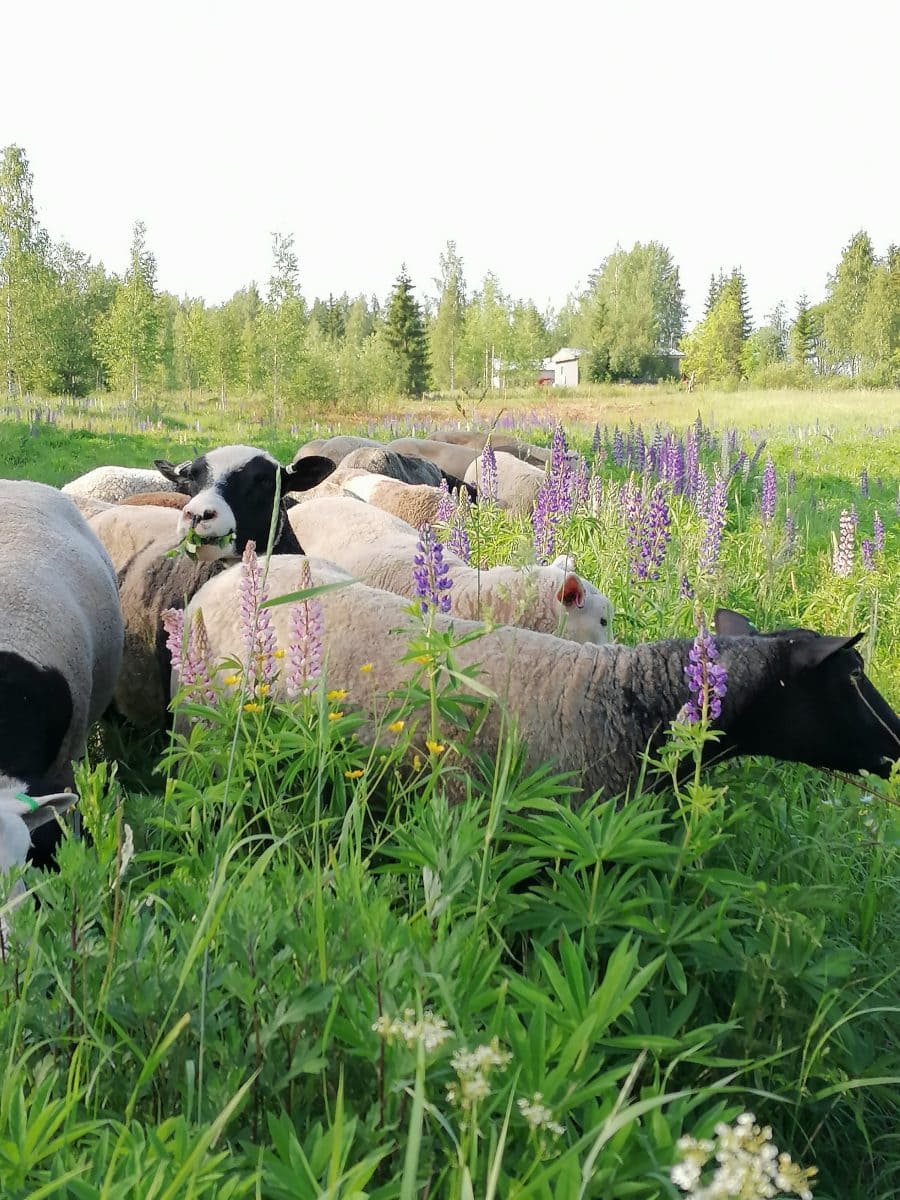“I was nervous, and quite a bit too,” admits Heli Jolkkonen, asecond-generation organic sheep farmer who has been in the industry for 13 years.
Jolkkonen was nervous because of her and her husband’s sheep – and what would happen to them when they started eating the poisonous alien species large-leaved lupine (Lupinus polyphyllus). Fortunately, they didn’t have to worry for long. For several years now, the sheep have been gobbling up lupines in the municipal lands of Polvijärvi in Eastern Finland. The sheep haven’t had any health issues as they eat the crop before the most toxic part of the lupine, the seeds, have had time to develop. Thanks to the sheep, the landscape has remained open and free of lupine.
“Sheep just love lupines. The budding seedlings are the first ones to disappear, even though the pasture has a wide variety of different species for the sheep to eat,” says Heli Jolkkonen. She emphasises that when planning grazing, it’s important to make sure lupines or any other invasive alien species don’t dominate the area.

The flock demolishing lupines in Polvijärvi consists of about 40 ewes, meaning adult sheep. They graze an area of about three hectares with a few ares of lupine vegetation. The grazing area is located near the centre of Polvijärvi. In addition to maintaining the landscape and enhancing biodiversity, the sheep also bring joy to local residents and passersby.
“Sheep are great at managing landscapes in busy areas. People, especially children, are interested in them and sheep don’t cause fear like cattle might. They also don’t tend to run away.”
Cooperation pays off
Heli Jolkkonen advises sheep farmers planning grazing on municipal land to contact the municipality as early as possible. In Polvijärvi, the municipality was on board with the plan from the start, especially when it became clear that there would be no costs to them yet plenty of benefits. The municipality carried out the necessary hearing of neighbours and doesn’t charge rent. Although there are no rent costs, there are other costs involved in organising grazing. A major expense at the start is constructing a fence. In Polvijärvi, they found a solution by working together.
“We applied for funding for the construction of the fence and animal shelter as well as creating signage from the Joensuu Region LAG together with MTK-Polvijärvi. The fence was erected in three days with the help of volunteers,” Jolkkonen recalls the arduous task.

Caring for the sheep is also time-consuming for sheep farmers. Cooperation and community spirit have been utilised in Polvijärvi to solve the issue. For a few years, the local 4H organisation has offered young people summer jobs in caring for the sheep.
“We got extra sets of hands and the youngsters got income and some nice educational moments in caring for sheep,” says Jolkkonen thankfully.
The Jolkkonen family runs an organic farm, which means they have to adhere to the organic production commitment when it comes to grazing. At the very start, a lease agreement was signed with the municipality although the grazing was managed on a voluntary basis. They’ve now applied for environmental subsidy for their operations.
Heli Jolkkonen urges other sheep farmers and municipalities to work together and to utilise sheep in lupine control.
Text: Susanna Winqvist (Rural Women’s Advisory Organization)
Photos: Heli Jolkkonen
